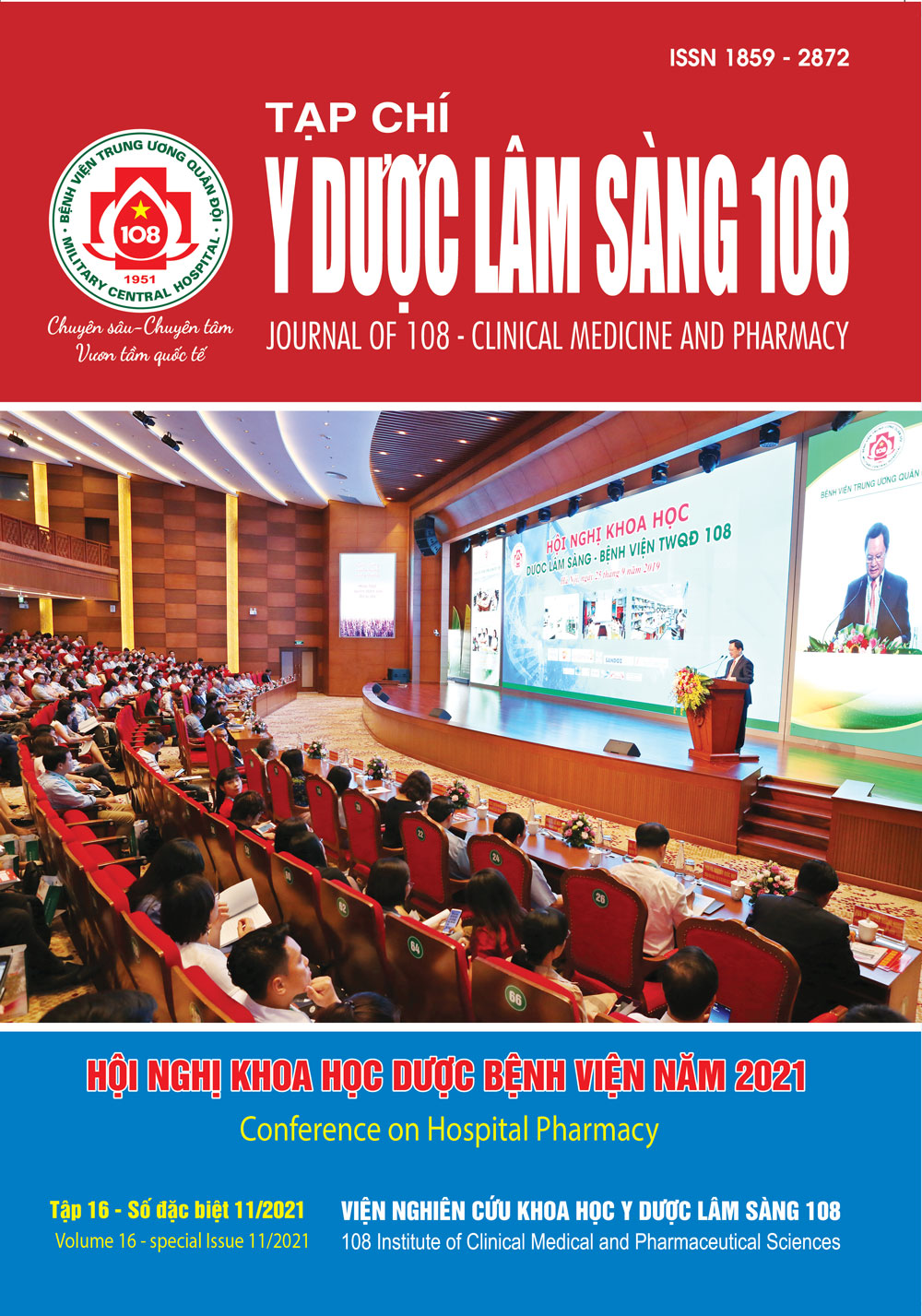Investigation on antibiotic use in the treatment of skin and soft tissue infections at University Medical Center Ho Chi Minh City
Main Article Content
Keywords
Abstract
Objective: To investigate pathogens and antibiotic use, to evaluate the rationality of antibiotic indication for common skin and soft tissue infections (SSTIs) as well as to identify factors that may be attributed to treatment response at University Medical Center Hochiminh City (UMC HCMC). Subject and method: A cross - sectional study was conducted in 136 patients diagnosed with abscess, cellulitis, or diabetic foot infection (DFI) and indicated with antibiotics for 3 days or more from 01/01/2019 to 31/12/2019 at UMC HCMC. Result: The rate of abscess, cellulitis, and DFI were 40.4%, 35.3%, and 24.3%, respectively. Methicillin - resistant Staphylococcus aureus (MRSA) was the most prevalent pathogen isolated (39.1%). Appropriate antibiotic indication was observed in 25% of patients treated with empirical antibiotic therapy and 58.5% of patients treated with pathogen - specific therapy. Factors related to prolonged hospitalization included incision and drainage, Charlson comorbidity index (CCI), MRSA infection, and the isolation of pathogens. Conclusion: We observed a high proportion of broad - spectrum antibiotics as empirical therapy, which was also the predominant factor associated with inappropriate antibiotic indication at the site of study.
Article Details
References
2. Alabi A et al (2018) Management of superficial and deep-seated Staphylococcus aureus skin and soft tissue infections in sub-Saharan Africa: A post hoc analysis of the StaphNet cohort. Infection. 46(3), 395-404.
3. De With K et al (2016) Strategies to enhance rational use of antibiotics in hospital: A guideline by the German Society for Infectious Diseases. Infection 44(3): 395-439.
4. Furtado GH et al (2019) Early switch/early discharge opportunities for hospitalized patients with methicillin-resistant Staphylococcus aureus complicated skin and soft tissue infections in Brazil. Braz J Infect Dis 23(2): 86-94.
5. Kaye KS et al (2019) Current epidemiology, etiology, and burden of acute skin infections in the united states. Clin Infect Dis 68(3): 193-199.
6. Linder KE et al (2017) Epidemiology, treatment, and economics of patients presenting to the emergency department for skin and soft tissue infections. Hospital Practice 45(1): 9-15.
7. Lipsky BA et al (2012) 2012 Infectious Diseases Society of America clinical practice guideline for the diagnosis and treatment of diabetic foot infections. Clin Infect Dis 54(12): 132-173.
8. Macía-Rodríguez C et al (2017) Skin and soft-tissue infections: Factors associated with mortality and re-admissions. Enfermedades Infecciosas y Microbiología Clínica 35(2): 76-81.
9. Moet GJ et al (2007) Contemporary causes of skin and soft tissue infections in North America, Latin America, and Europe: Report from the SENTRY Antimicrobial Surveillance Program (1998-2004). Diagnostic Microbiology and Infectious Disease 57(1): 7-13.
10. Stevens DL et al (2014) Practice guidelines for the diagnosis and management of skin and soft tissue infections: 2014 update by the infectious diseases society of America. Clin Infect Dis 59(2): 147-159.
 ISSN: 1859 - 2872
ISSN: 1859 - 2872
